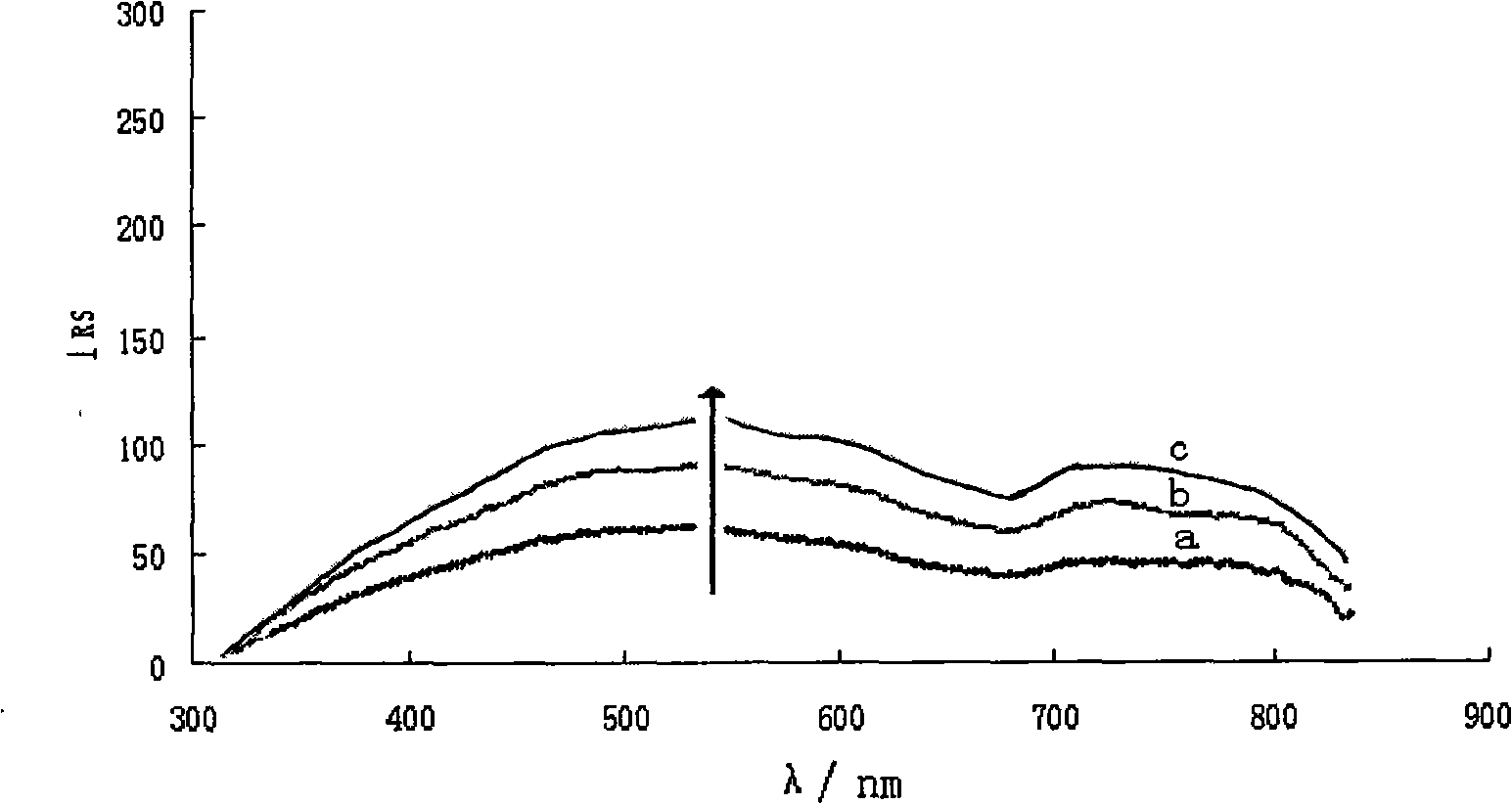Catalytic reaction-resonance scattering spectroscopic method for detecting trace molybdenum
A technology of resonance scattering and catalytic reaction, applied in the measurement of scattering characteristics, etc., can solve the problems of not being widely used, restricting wide use, and high technical requirements, achieving good application value, strong anti-interference, and good selectivity. Effect
- Summary
- Abstract
- Description
- Claims
- Application Information
AI Technical Summary
Problems solved by technology
Method used
Image
Examples
Embodiment
[0020] First prepare ①0.9M tin dichloride, weigh 20.3g SnCl 2 2H 2 O was dissolved in 30mL concentrated hydrochloric acid (the concentration of hydrochloric acid was 3.6mol / L); ②0.012M sodium tellurate: weigh 0.33g Na 2 TeO 4 .2H 2 O dissolved in 100mL water; ③1×10 -2 Mo(VI) of M: Weigh 0.242gNa 2 MoO 4 .2H 2 O was dissolved in 100 mL of water, and then serially diluted to obtain 1×10 -5 Mo(VI) of M. The reagents used were of analytical grade, and the experimental water was sub-boiling high-purity water. The specific measurement steps are as follows:
[0021] (1) Prepare the standard system of molybdenum: pipette 0.3mL of 0.012M sodium tellurate, a certain amount of molybdenum ion catalyst, and 0.75mL of 0.9M tin dichloride in a 5.0mL graduated test tube, and set the volume to 3.0mL. Namely Na 2 TeO 4 The concentration of tin dichloride is 1.2mM, and the concentration of tin dichloride is 0.225M, and then placed in a constant temperature water bath at 65°C for 6 mi...
PUM
 Login to View More
Login to View More Abstract
Description
Claims
Application Information
 Login to View More
Login to View More - R&D
- Intellectual Property
- Life Sciences
- Materials
- Tech Scout
- Unparalleled Data Quality
- Higher Quality Content
- 60% Fewer Hallucinations
Browse by: Latest US Patents, China's latest patents, Technical Efficacy Thesaurus, Application Domain, Technology Topic, Popular Technical Reports.
© 2025 PatSnap. All rights reserved.Legal|Privacy policy|Modern Slavery Act Transparency Statement|Sitemap|About US| Contact US: help@patsnap.com


